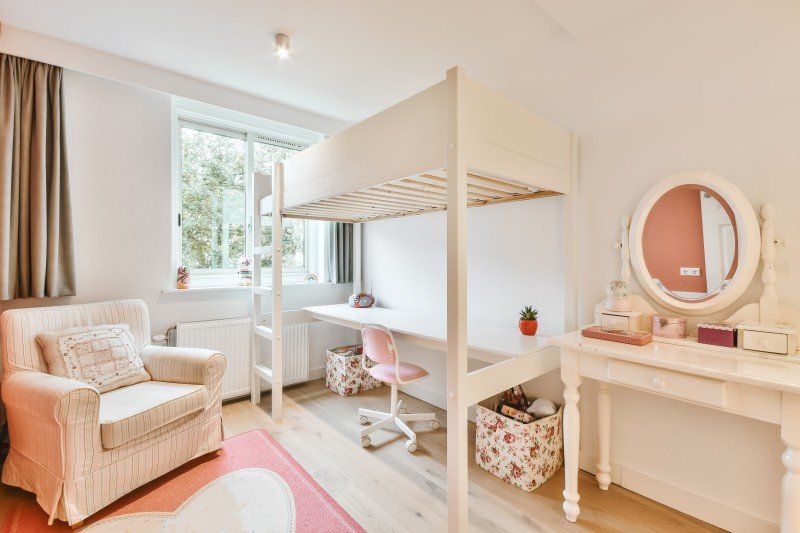The Ultimate Guide to Bunk Beds for Children: Safety, Styles, and Benefits
When it concerns styling a kid's space, moms and dads often deal with the double challenge of taking full advantage of space while making sure comfort and performance. Bunk beds have emerged as a popular service that attends to these requirements, providing not just sleeping plans however likewise adding to a space's aesthetic. In Full Record , we will dig into various aspects of kids's bunk beds, concentrating on their benefits, safety features, designs, and factors to consider for parents contemplating this purchase.
Table of Contents
- Benefits of Bunk Beds
- Safety Features to Consider
- Kinds Of Bunk Beds
- Design and Style Options
- Maintenance Tips
- Regularly Asked Questions (FAQs)
1. Advantages of Bunk Beds
Bunk beds provide numerous advantages for children and their moms and dads. Here are some essential advantages:
- Space-Efficiency: Bunk beds are an excellent service for smaller sized rooms. By stacking one bed on top of another, more floor space is readily available for play, storage, or research study areas.
- Cost-Effective: When kids share rooms, bunk beds can decrease the need for acquiring 2 different beds, thus saving money.
- Promotes Social Interaction: Bunk beds can assist brother or sisters or friends bond by sharing a space, producing opportunities for social advancement.
- Enjoyable Factor: The principle of sleeping "up high" includes a lively aspect to bedtime, making the transition to sleeping alone simpler for some kids.
- Versatile Design: Bunk beds come in various styles, colors, and creates to match any space theme, enabling for modification that reflects the child's personality.
2. Safety Features to Consider
Safety is critical when it pertains to kids's furniture, specifically when it comes to bunk beds. Here are some important security features to assess:
| Safety Feature | Description |
|---|---|
| Durable Construction | Frames made from solid wood or metal are chosen. |
| Guardrails | Should be at least 5 inches high and extend along both sides of the upper bunk. |
| Ladder Design | Guarantee ladders are safely connected and have non-slip steps. |
| Bed mattress Size & & Fit | Need to fit snugly within the frame to avoid spaces. |
| Weight Limit | Constantly abide by the maker's weight limitation recommendations. |
3. Kinds Of Bunk Beds
Bunk beds can be found in a number of designs, accommodating different needs, preferences, and room sizes. Here are some typical types:
- Standard Bunk Bed: The a lot of basic type, with one bed on top of another.
- Loft Bed: Features a high upper bed with space below for a desk or play area.
- Futon Bunk Bed: Combines a leading bunk with a futon on the bottom, offering flexibility for seating and sleeping.
- L-Shaped Bunk Bed: This design has the top bunk set at a perpendicular angle to the bottom, creating a small corner location.
- Triple Bunk Bed: Accommodates 3 kids utilizing stacked beds, ideal for large households or pajama parties.
4. Design and Style Options
When it concerns picking a design for kids's bunk beds, the choices are essentially endless. Here are some popular styles:
- Traditional Style: Often made from wood, these bunk beds include ornate details and are best for classic or rustic-themed rooms.
- Modern Style: Characterized by clean lines and minimalist styles, modern bunk beds can be made of metal or wood.
- Themed Bunk Beds: Some brand names use bunk beds shaped like castles, cars, or playhouses, making bedtime less of a chore.
- Convertible Bunk Beds: These can be separated into 2 individual beds, offering versatility as children grow.
- Colorful Options: Bunk beds in vibrant colors can include a sense of pleasure and playfulness to any room.
5. Upkeep Tips
Keeping a bunk bed is important for durability and security. Here are some pointers:
- Regular Inspections: Check for loose screws or bolts every couple of months and tighten them as needed.
- Cleaning: Wipe down frames frequently to avoid dust accumulation; consider utilizing a vacuum for hard-to-reach locations.
- Bed mattress Care: Rotate mattresses routinely and utilize protective covers to lengthen their life.
- View for Wear and Tear: Look for any signs of damage in the wood or metal and consider replacing parts if necessary.
- Teach Kids Safety Rules: Encourage children to use ladders effectively and ensure they comprehend the security functions of their bed.
6. Often Asked Questions (FAQs)
Q1: What age is suitable for oversleeping a top bunk?
A1: Typically, children aged 6 and older are recommended for upper bunk sleeping, as they have the needed motor abilities to climb safely.
Q2: Do bunk beds feature a bed mattress?
A2: Most bunk beds are offered as frames only, so you will require to purchase mattresses separately. Make sure that the mattress fits the frame comfortably.
Q3: Can bunk beds be separated later?
A3: Many styles enable conversion into two individual beds, supplying flexibility for future requirements.
Q4: How can I guarantee my kid's safety on a bunk bed?
A4: Comply with safety requirements and make sure guardrails, a strong frame, and a protected ladder remain in location.
Q5: Are there weight limits on bunk beds?
A5: Yes, constantly inspect the manufacturer's specifications concerning weight limitations to guarantee safety.
Bunk beds for kids can serve several purposes while making sure safety and design. With varied styles and designs available on the marketplace, parents can discover an unit that not only makes the most of bedroom space but also shows their kid's unique tastes. Similar to any furniture, understanding safety features, maintenance, and how they suit a kid's way of life will make sure that these beds remain a useful furnishings solution for several years to come.
Through careful factor to consider and adherence to security guidelines, bunk beds can provide a lasting, enjoyable, and practical sleeping service that children like.

